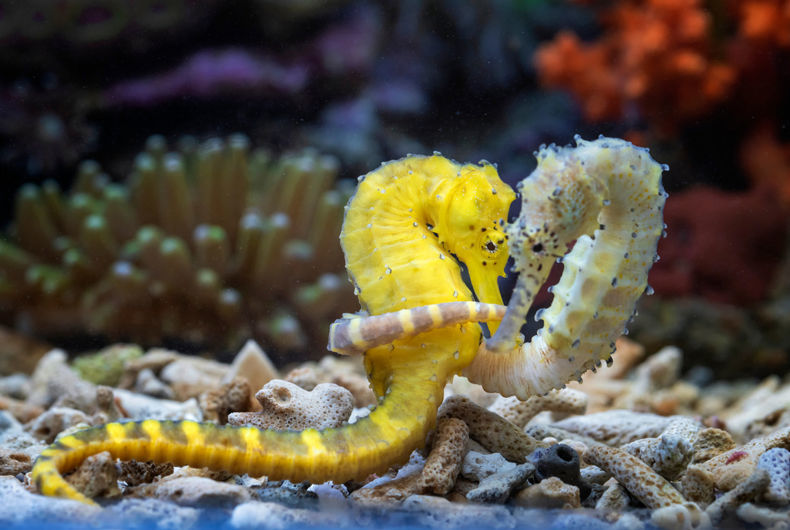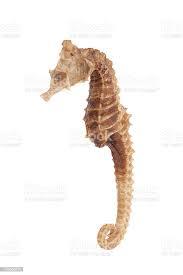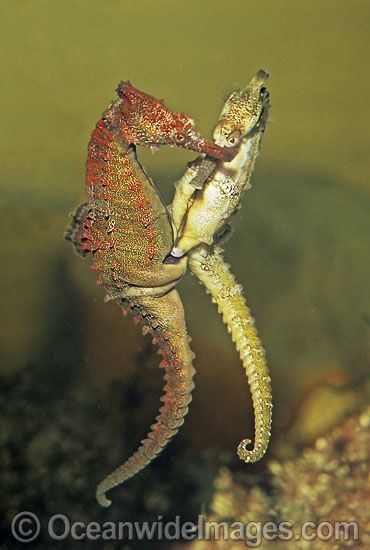
Sam & Sandy
The following story is aligned (pretty-much) with the characteristics of seahorses.
Sam was nearly a year old. He and his nearly 400 siblings in his brood resided in the open waters off the California coast. It was in the middle of summer and each of his two eyes individually scanned  the water for seaweed and small crustaceans to vacuum via his snout to feed his voracious hunger. It was also time for his first search for a mate. To start his pursuit, Sam first dilated the opening in his 'brooding pouch' and expanded it by filling it with water. His pouch would be used for the fertilization of the female's eggs, followed by delivery, that would be placed there by an accepting female. He also changed his color to a light yellow as a further enhancement to his natural brownish color. Once he was chosen by a female, they would be life-long mates.
the water for seaweed and small crustaceans to vacuum via his snout to feed his voracious hunger. It was also time for his first search for a mate. To start his pursuit, Sam first dilated the opening in his 'brooding pouch' and expanded it by filling it with water. His pouch would be used for the fertilization of the female's eggs, followed by delivery, that would be placed there by an accepting female. He also changed his color to a light yellow as a further enhancement to his natural brownish color. Once he was chosen by a female, they would be life-long mates.
Seahorses are monogamous and are among the few animal species in which the male bears the unborn young.
Sam had approached several females only to be ignored by them as they swam away. At this point, Sam expelled the water from his expanded pouch and moved to the seaweed where he would attached himself with his tail for stability in the slight current. It was only a few moments later when he noticed another female with his left eye. He casually turned his body preparing  to turn on his 'charm' once again. He let go of the seaweed, lowered his head, expanded his pouch, and swam slowly toward the female rapidly fluttering his dorsal fin His yellow coloring had expanded across his body with additional intensity; his pouch was not to be ignored. Unlike the previous. females, Sandy was not shy and changed her color as well. The courtship 'dance' began with short bursts of the two swimming together with their tails entwined. Sam continuously pointed his snout upwards guiding the two to the surface. Near the surface, Sandy placed her abdomen close to Sam's brooding pouch and squirted in hundreds of eggs. With a gestation period of less than 20 days, this could have been the first of several egg deliveries that summer had the following not happened.
to turn on his 'charm' once again. He let go of the seaweed, lowered his head, expanded his pouch, and swam slowly toward the female rapidly fluttering his dorsal fin His yellow coloring had expanded across his body with additional intensity; his pouch was not to be ignored. Unlike the previous. females, Sandy was not shy and changed her color as well. The courtship 'dance' began with short bursts of the two swimming together with their tails entwined. Sam continuously pointed his snout upwards guiding the two to the surface. Near the surface, Sandy placed her abdomen close to Sam's brooding pouch and squirted in hundreds of eggs. With a gestation period of less than 20 days, this could have been the first of several egg deliveries that summer had the following not happened.
After mating, the two wrapped their tails around some seaweed with the waters getting murky. A storm was brewing on the surface, and the currents were getting to be too much for the stability for either of the two. Suddenly, a large shark swam by creating an increase in current beyond what Sandy had prepared for. In a moment she was swept away without Sam's notice in that he was lower on the seaweed.
It would not be until morning that the water would clear and the current subsided that Sam untangled from the seaweed and headed towards the surface to join Sandy. He was totally confused with her absence. He instinctively understood that Sandy was his lifetime mate, but she was gone. He still had another 14 days of carrying the eggs to delivery, and his natural defense mechanisms kicked in. Given that seahorses are a common feed for crabs, rays, and crustaceans, his instinct was first to provide protection for the brood he was carrying, and then to seek Sandy. Should that search fail, then he would need to find a new mate that would accept him, if that was even possible.
He headed to a small cave he had noticed in the coral nearby as a place to avoid his predators. The burden of the hundreds of eggs in his expanded brood pouch affected his agility. Once in the cave, he attached his tail to an edge of the coral. He was determined to reside there until the brood was delivered. The gestation period passed, and his brood was released inside of the cave. They were all on their own now; his 'parenting' was complete. His primary instinct now was to seek Sandy. He left that first cave staying just above the bottom to avoid crabs, but not so high to. be swept in by the rays circling in the water. He went from cave to cave within the same reef looking for Sandy. He purposely expanded his brood pouch and changed his outer color to the same yellow that he had used to attract Sandy initially. As with his first mating experience, he was rejected by several female seahorses, even though that was not his intent. Instinctively, he was only seeking Sandy. The rejection received from the females nonetheless, had an effect on him. However, that rejection made him even more intent to find Sandy.
Again, a storm was brewing on the surface with even more disruption in the water than when he was separated from Sandy. He struggled desperately against the aggressive current to make it to a small cave in the coral. Once there, he again attached his tail to a coral spike for stability. He was quite exhausted with the effort and didn't think to deflate his pouch to wait through the storm and the light of the forthcoming morning. Being of the type of seahorse that is inactive at night, Sam settled into a 'comfort' state. It would not be until morning that his eyes would begin to notice his environment, that is once the water cleared from the storm. In the early morning, Sam felt some unusual nudging against his back. His excellent eyesight  was not able yet to determine the source for pressure against his backside. But, he was unable to move his dorsal fin that provided propulsion. He deflated his brood pouch as a means to break free from this restriction as well as using his tail to push away. That worked as he turned to face the obstacle .... It was Sandy, that by chance, was also looking for a safe position during the passing storm, and she had found her way to the same cave after her horrendous wanderings since first being swept away by currents weeks before. Within moments they were clutching to each other with their tails entwined.
was not able yet to determine the source for pressure against his backside. But, he was unable to move his dorsal fin that provided propulsion. He deflated his brood pouch as a means to break free from this restriction as well as using his tail to push away. That worked as he turned to face the obstacle .... It was Sandy, that by chance, was also looking for a safe position during the passing storm, and she had found her way to the same cave after her horrendous wanderings since first being swept away by currents weeks before. Within moments they were clutching to each other with their tails entwined.
There would be more broods that summer as Sam and Sandy purposely stayed within eyesight of each other, even when clinging to seaweed for the evening.